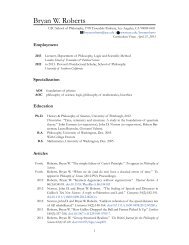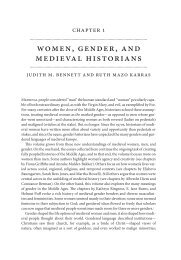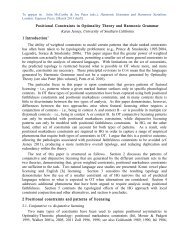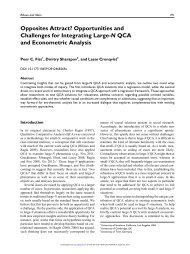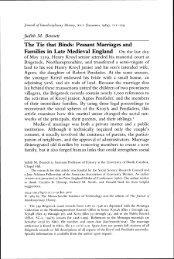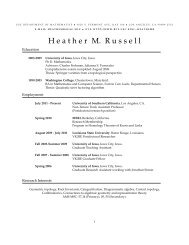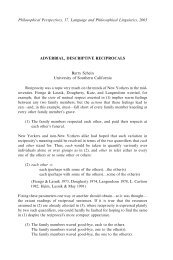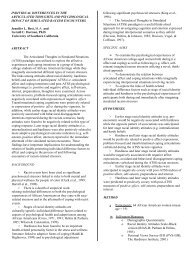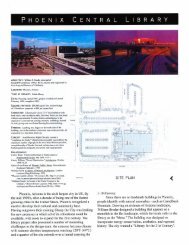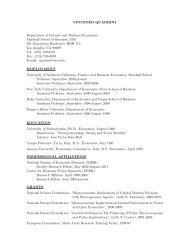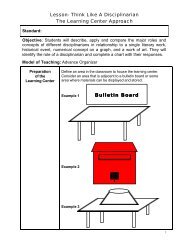Shieva Kleinschmidt [This version differs from the Phil Studies ... - Usc
Shieva Kleinschmidt [This version differs from the Phil Studies ... - Usc
Shieva Kleinschmidt [This version differs from the Phil Studies ... - Usc
Create successful ePaper yourself
Turn your PDF publications into a flip-book with our unique Google optimized e-Paper software.
depend on repulsive forces; it’s simply that, once a region is filled up with something,<br />
<strong>the</strong>re isn’t room for anything more in it.<br />
It may be claimed that things can colocate without overfilling a region when <strong>the</strong><br />
things in question have exactly <strong>the</strong> same proper parts. <strong>This</strong> is where <strong>the</strong> second anti-<br />
colocation intuition comes up: if two things are made up of exactly <strong>the</strong> same things, and<br />
are in exactly <strong>the</strong> same region, what is it in virtue of that <strong>the</strong>y are different? Why is it, for<br />
instance, that <strong>the</strong> statue cannot survive squashing and <strong>the</strong> bronze can, if <strong>the</strong>y’re just made<br />
up of <strong>the</strong> same atoms arranged in exactly <strong>the</strong> same way for each?<br />
There have been various proposals for how to avoid having colocated entities,<br />
including: contingency of identity, relative identity, counterpart <strong>the</strong>ory, temporal parts<br />
<strong>the</strong>ory, and eliminativism about (at least) one of <strong>the</strong> entities taken to be colocated. I will<br />
not describe or criticize <strong>the</strong>se proposed solutions (discussion of each of <strong>the</strong>m can be<br />
found in Rea 1997). However, many philosophers find <strong>the</strong>m ei<strong>the</strong>r insufficient for<br />
solving <strong>the</strong> problem, or unacceptably costly. <strong>This</strong> is where <strong>the</strong> stuff solution becomes<br />
potentially helpful.<br />
2. The Stuff Response<br />
It has been claimed that distinguishing “stuff” <strong>from</strong> “things” solves <strong>the</strong> statue/lump<br />
puzzle. 2 According to this solution, (i) although colocation between two things is<br />
objectionable, it is not objectionable when it occurs between a thing and <strong>the</strong> stuff it’s<br />
made of; (ii) while <strong>the</strong> statue is a thing, <strong>the</strong> bronze is a portion of stuff (not a thing), so<br />
(iii) <strong>the</strong> colocation between <strong>the</strong> bronze and <strong>the</strong> statue is unobjectionable. We’ll look at<br />
this proposal more closely in this section.<br />
The immediate question is, what is stuff? The quick answer is: stuff is <strong>the</strong> matter<br />
of which things are made. Vere Chappell says (describing “matter”, which here refers to<br />
physical stuff): “Matter . . . is <strong>the</strong> stuff of which certain individual things are made . . .<br />
[it’s that] which constitutes <strong>the</strong>m.” 3 As <strong>the</strong> quotation suggests, <strong>the</strong> constitution relation is<br />
<strong>the</strong> made of relation. But past telling us that stuff is what things are constituted by, his<br />
2 So far I have been using ‘thing’ and ‘entity’ interchangeably. Throughout <strong>the</strong> rest of <strong>the</strong> paper I will use<br />
‘entity’ as a term that can refer to whatever can be quantified over. It applies to any member of any<br />
ontological category, including things, stuff, and pluralities. It is not meant to imply that <strong>the</strong> referent in<br />
question is a thing. I will use ‘thing’ in a narrow sense, as synonymous with ‘object’.<br />
3 “Matter,” p. 681.



